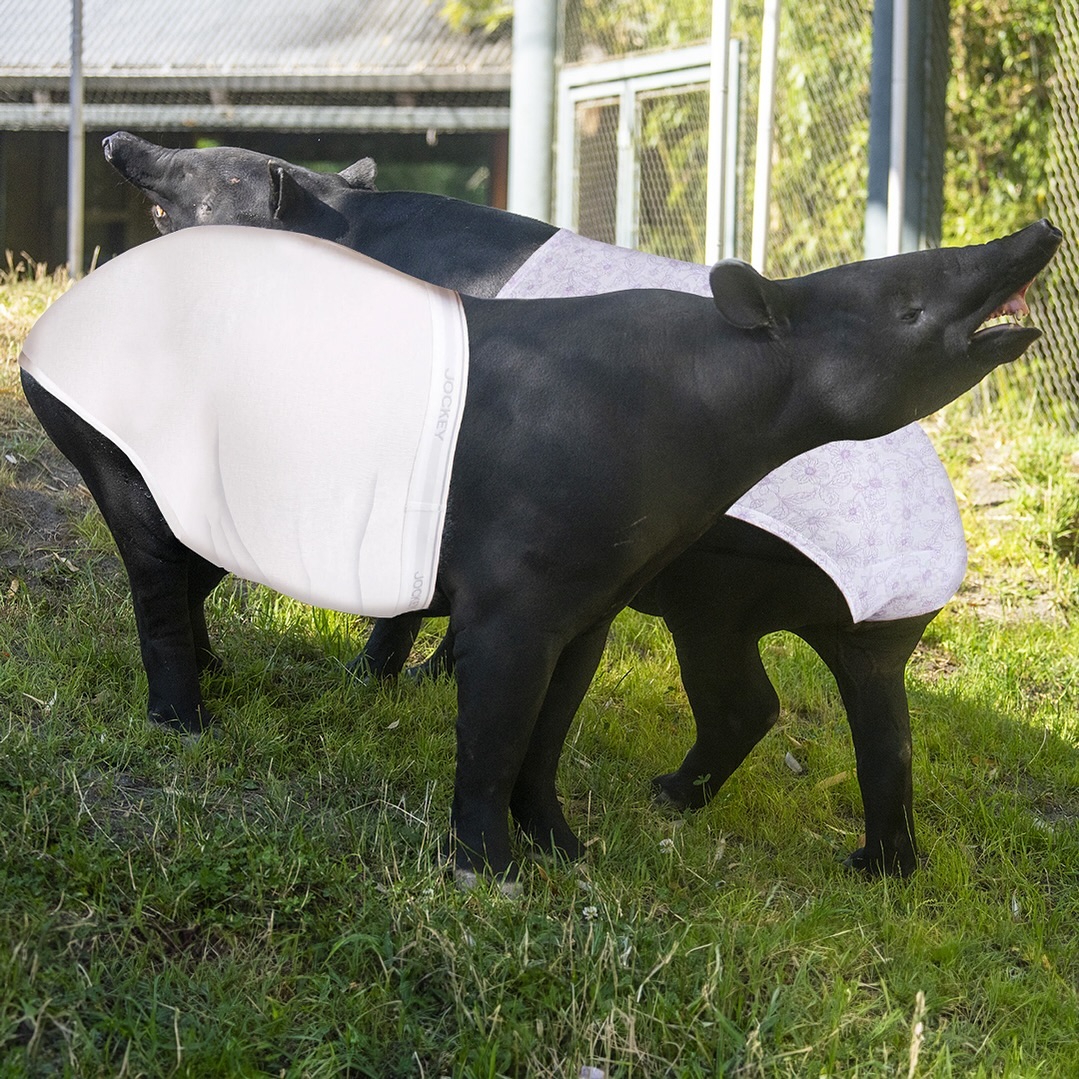– Communication and territorial behaviors in tapirs, focusing on scent-marking and urine spraying
– Innovations in zoo management: developing underwear for tapirs
– The importance of understanding animal behaviors for wildlife conservation and zoo environments
Tapirs, members of the family Tapiridae, have been part of the Earth’s fauna for millions of years. These large, herbivorous mammals are most commonly found in the jungles and forests of Central and South America and Southeast Asia. They are distinguished by their prehensile snouts, which function like an elephant’s trunk, and their somewhat solitary and secretive nature.
One of the tapirs’ most intriguing behaviors is their communication method and territorial marking. Tapirs use scent marking, leaving olfactory signals in the environment for other tapirs to discover. This behavior is essential for delineating territories, finding mates, and avoiding conflict. A particularly surprising aspect of this behavior is their ability to spray urine over considerable distances—some reports indicate a reach of over 10 feet. This unique adaptation serves several purposes, from marking territory to communicating reproductive status.
The biology of scent-marking in tapirs is closely tied to their ecological role as forest dwellers. Their urine, which contains chemical compounds, provides information to other individuals. The urine’s pheromones and other chemical signals convey messages regarding the individual’s identity, reproductive state, and territorial claims. The tapir’s robust muscular control and specialized anatomy allow this impressive urine-spraying ability.
Handling this exceptional urinary technique can be a challenge in zoo management. Tapirs in captivity may continue to exhibit this natural behavior, making maintaining clean and hygienic environments more demanding for zoo staff. Yet, understanding and accommodating such natural behaviors are essential for the well-being of the animals and the smooth operation of zoos. Innovative thinking led staff at a particular zoo to develop an unusual solution: prototype underwear for tapirs Baku and Yuna.
The development of tapir underwear is more than a whimsical idea; it represents the lengths to which zoo professionals will go to ensure the comfort and health of the animals in their care. This kind of innovative problem-solving mirrors the adaptations seen in wildlife and highlights a significant aspect of modern conservation efforts – the recognition of individual animal needs and behaviors. Such endeavors can enhance overall animal welfare while easing the workload of zookeepers and caretakers.
The success of such a prototype could also open doors for new approaches to animal management in captivity. By taking cues from the animal’s natural behavior and applying creative solutions, zoos could address challenges traditionally met with more invasive or less animal-friendly methods. This could revolutionize the way we care for species with unusual or particularly messy habits.
Wildlife conservation efforts also benefit from a deeper understanding of animal behaviors like those exhibited by tapirs. Behaviors involved in communication and reproduction are critical to species’ survival in the wild. Knowledge gathered from observing and managing tapirs in zoos can inform strategies for preserving these animals in their natural habitats.
Protecting tapir populations relies on habitat conservation and understanding interspecies dynamics. Since tapirs serve as seed dispersers and landscape modifiers, their behavior significantly impacts their ecosystem. Their scent-marking and other communicative behaviors ensure genetic diversity and the health of populations, which is a cornerstone of ecosystem stability. In this context, every piece of knowledge about tapir behavior, however trivial it might seem, is invaluable in painting a complete picture of their ecological role and the intricate web of forest life.
Ultimately, the story of tapir scent-marking behavior and the response of zoo management to it offers a provocative snapshot of how human ingenuity can meet wildlife needs. As we continue to house and observe tapirs within zoo environments, we must remain committed to adapting our practices to support their unique ecological habits and behaviors.
Educating the public on these aspects of tapir biology and care can foster a greater appreciation for the complexities of managing wildlife species in zoo settings and natural habitats. Zoos serve as sanctuaries for preserving species and as educational platforms that can inspire a new generation of conservationists. It is crucial for zoos to champion the conservation message, illustrating the intricate balance between animal behavior, welfare, conservation, and human stewardship.
As animal care standards evolve and progress, the insights gleaned from the animal kingdom will inevitably lead to better practices, influencing the dual goals of ensuring animal welfare and environmental conservation. Informed by the tireless work of zoologists and conservationists, these practices aim to safeguard the diversity and natural heritage represented by creatures such as the remarkable tapir.
*****
Source Description
Tapirs are known for scent-marking and can spray sticky urine over a 10-foot distance! Our staff has developed an underwear prototype for tapirs, Baku and Yuna. 😂


